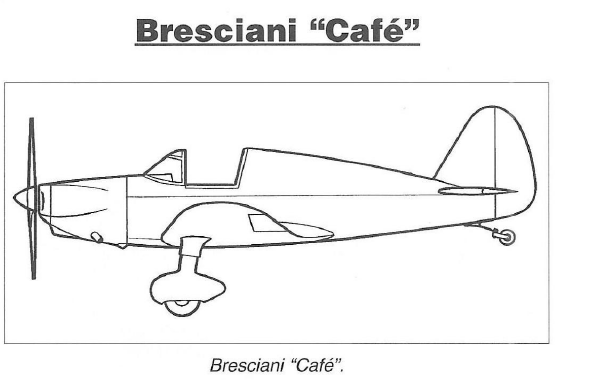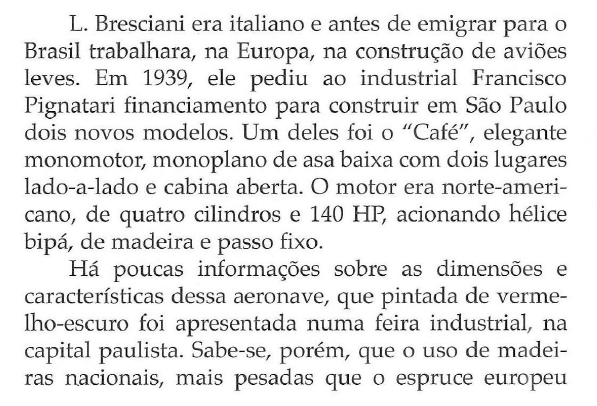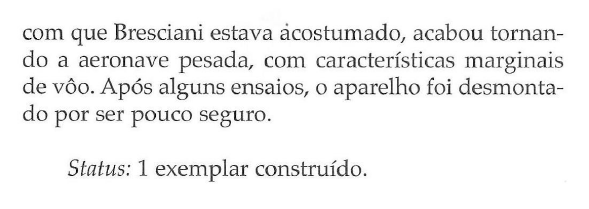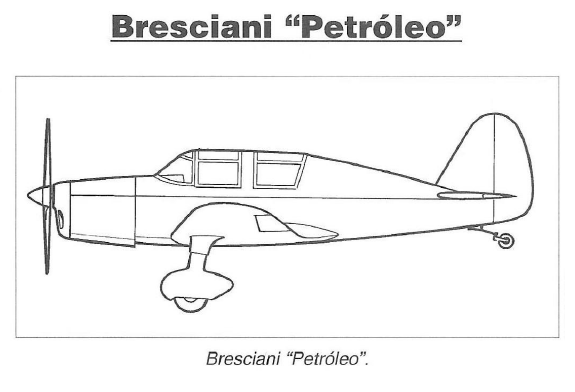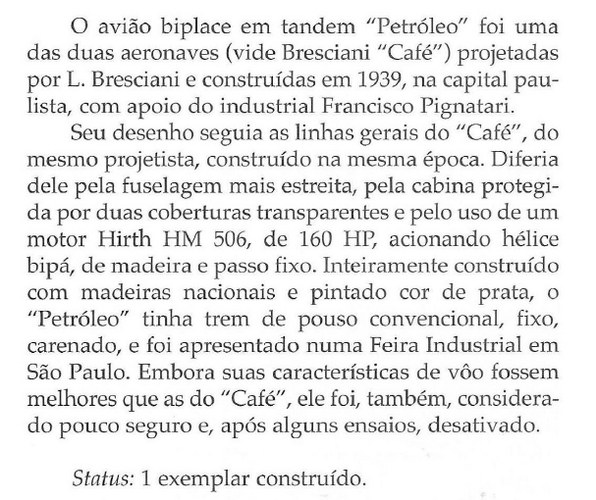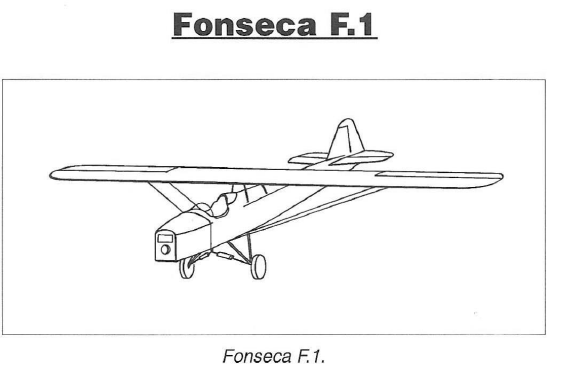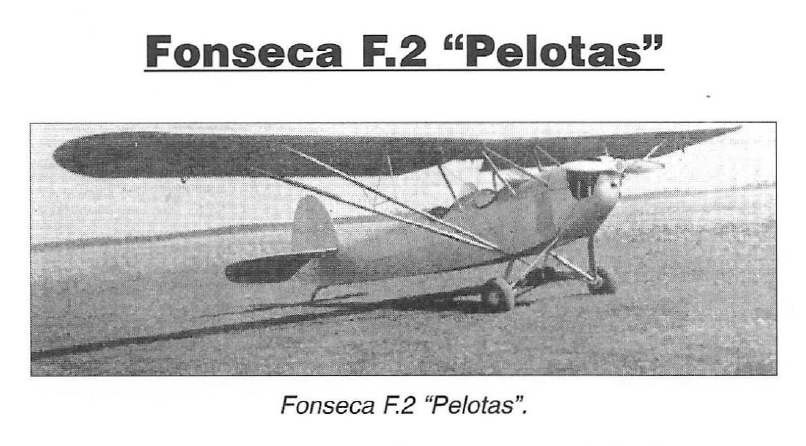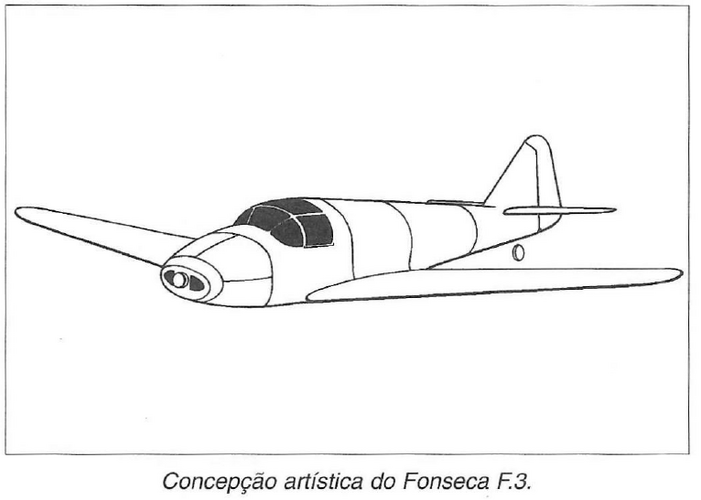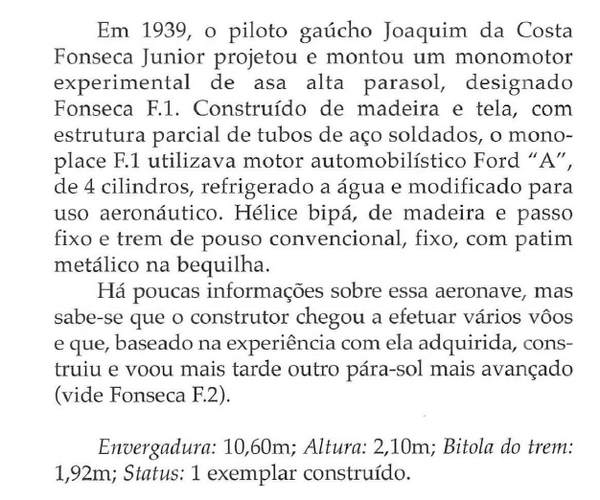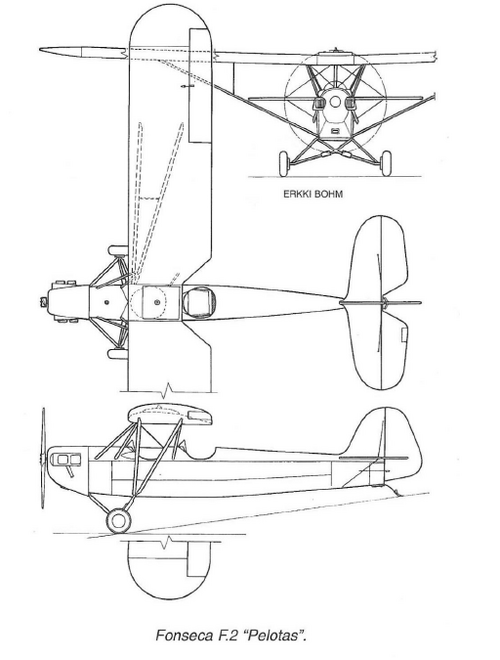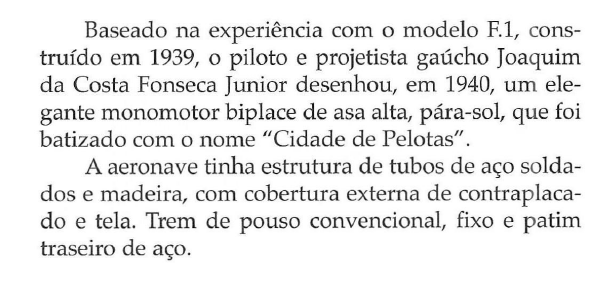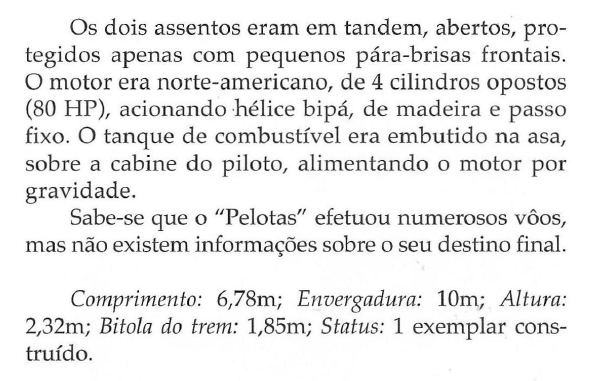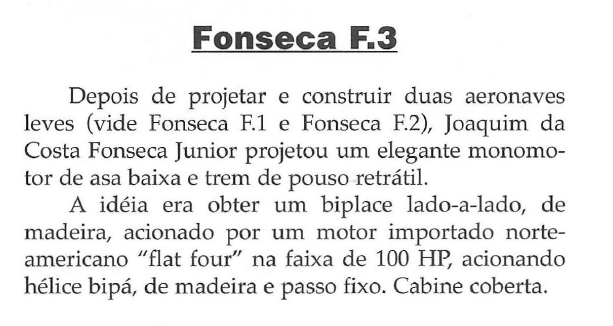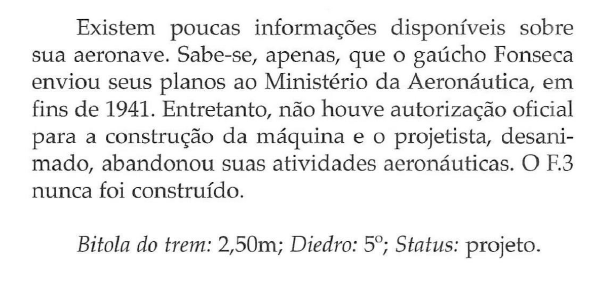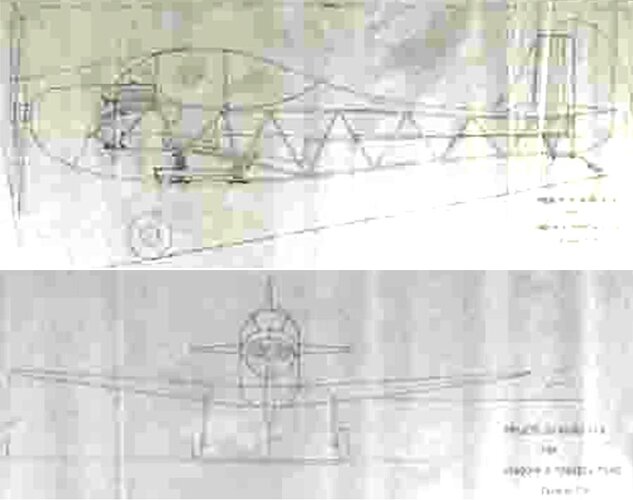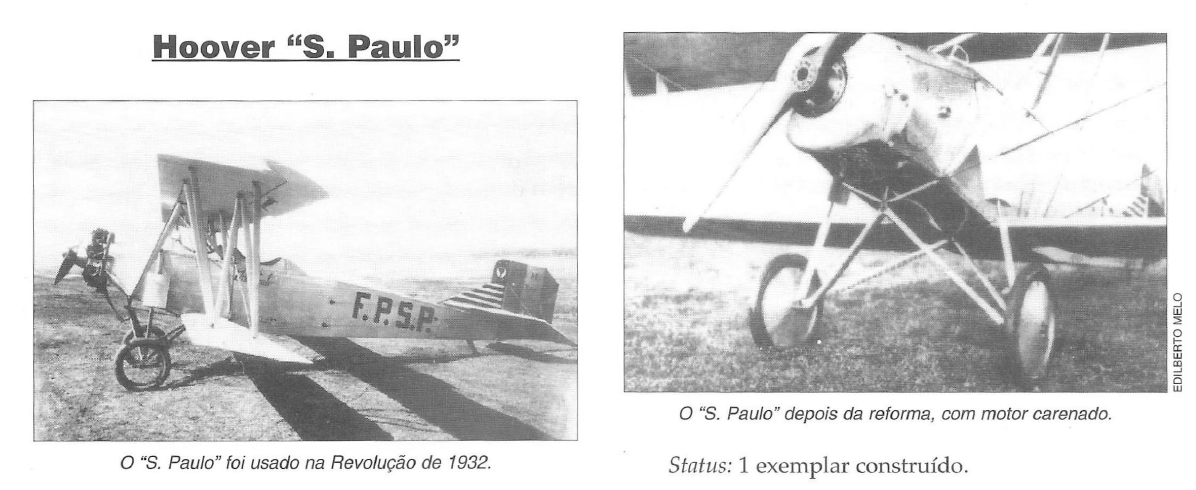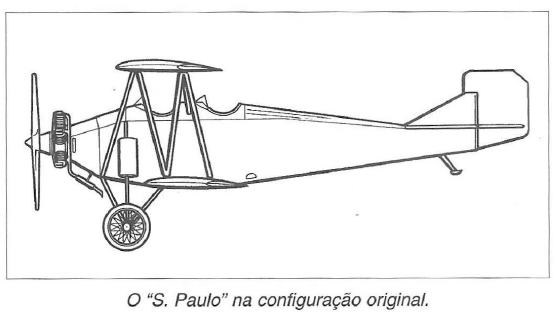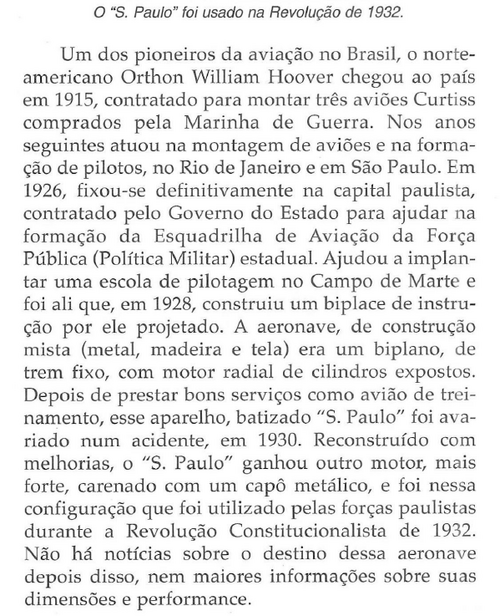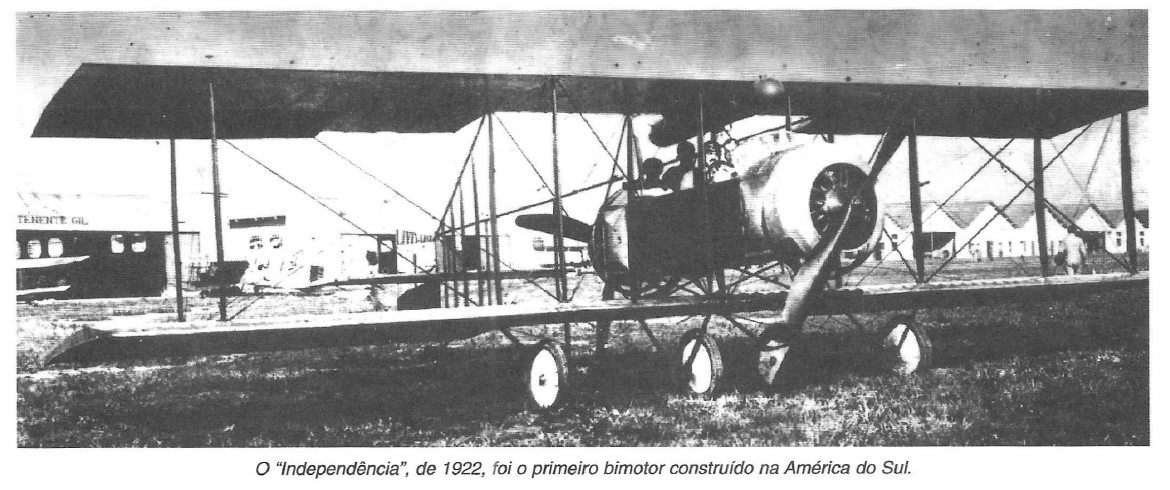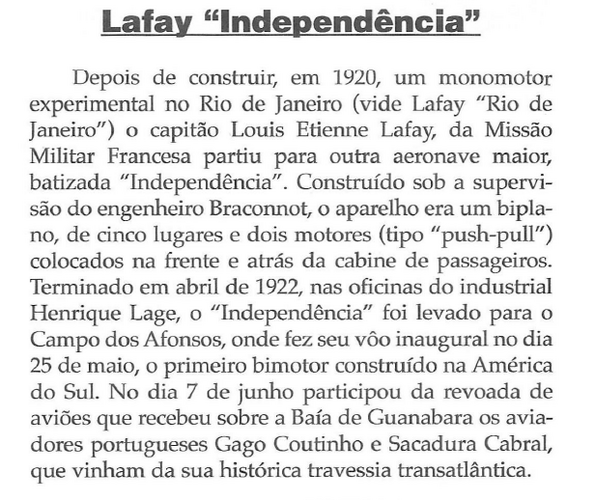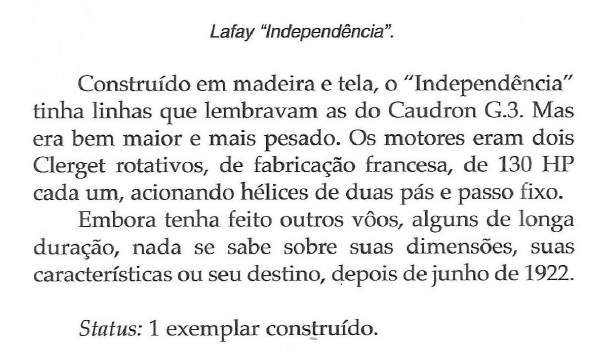- Joined
- 26 May 2006
- Messages
- 34,911
- Reaction score
- 15,786
From, Enciclopedia de Avioes Brasileiros;
L. Bresciani was Italian and before emigrating to the
Brazil had worked, in Europe, in the construction of aircraft
light. In 1939, he asked the industrialist Francisco
Pignatari financing to build in São Paulo
two new models. One of them was the “Café”, elegant
single-engine, two-seater low-wing monoplane
side-by-side and open cab. The engine was North American, four-cylinder and 140 HP, driving propeller
beeper, wooden and fixed pitch.
There is little information about dimensions and
characteristics of this aircraft, which painted dark red was presented at an industrial fair, in
São Paulo capital. It is known, however, that the use of national wood, heavier than European spruce
what Bresciani was used to, ended up making the aircraft heavy, with marginal characteristics
of flight. After some tests, the device was disassembled as it was unsafe.
Status: 1 copy built.
The tandem two-seater airplane "Oil" was a
of the two projected aircraft (see Bresciani “Café”)
by L. Bresciani and built in 1939, in São Paulo, with the support of industrialist Francisco Pignatari.
Its design followed the general lines of the "Café", of the
same designer, built at the same time. differed
of it by the narrower fuselage, by the cabin protected by two transparent covers and by the use of a
Hirth HM 506 engine, 160 HP, driving propeller
beeper, wooden and fixed pitch. fully built
with national woods and painted silver, the
"Oil" had conventional, fixed landing gear,
careened, and was presented at an Industrial Fair in
São Paulo. Although its flying characteristics were
better than those at “Café”, it was also considered unsafe and, after some rehearsals, deactivated.
Status: 1 copy built.
L. Bresciani was Italian and before emigrating to the
Brazil had worked, in Europe, in the construction of aircraft
light. In 1939, he asked the industrialist Francisco
Pignatari financing to build in São Paulo
two new models. One of them was the “Café”, elegant
single-engine, two-seater low-wing monoplane
side-by-side and open cab. The engine was North American, four-cylinder and 140 HP, driving propeller
beeper, wooden and fixed pitch.
There is little information about dimensions and
characteristics of this aircraft, which painted dark red was presented at an industrial fair, in
São Paulo capital. It is known, however, that the use of national wood, heavier than European spruce
what Bresciani was used to, ended up making the aircraft heavy, with marginal characteristics
of flight. After some tests, the device was disassembled as it was unsafe.
Status: 1 copy built.
The tandem two-seater airplane "Oil" was a
of the two projected aircraft (see Bresciani “Café”)
by L. Bresciani and built in 1939, in São Paulo, with the support of industrialist Francisco Pignatari.
Its design followed the general lines of the "Café", of the
same designer, built at the same time. differed
of it by the narrower fuselage, by the cabin protected by two transparent covers and by the use of a
Hirth HM 506 engine, 160 HP, driving propeller
beeper, wooden and fixed pitch. fully built
with national woods and painted silver, the
"Oil" had conventional, fixed landing gear,
careened, and was presented at an Industrial Fair in
São Paulo. Although its flying characteristics were
better than those at “Café”, it was also considered unsafe and, after some rehearsals, deactivated.
Status: 1 copy built.

